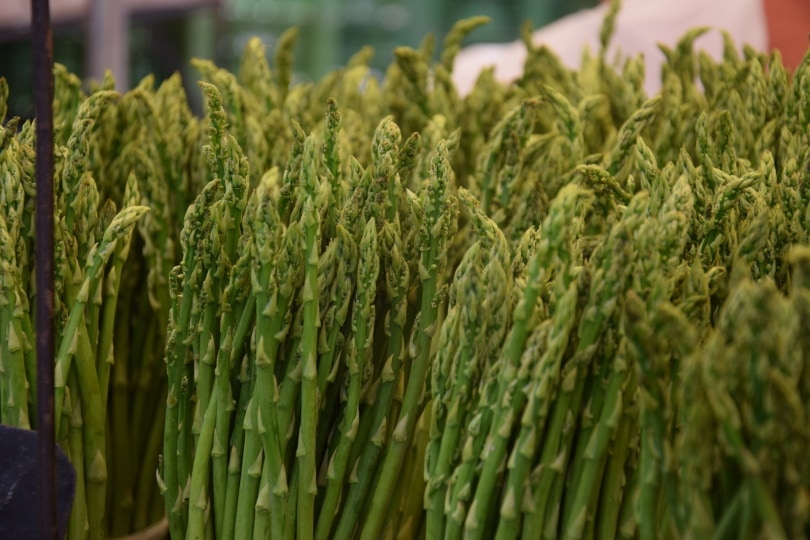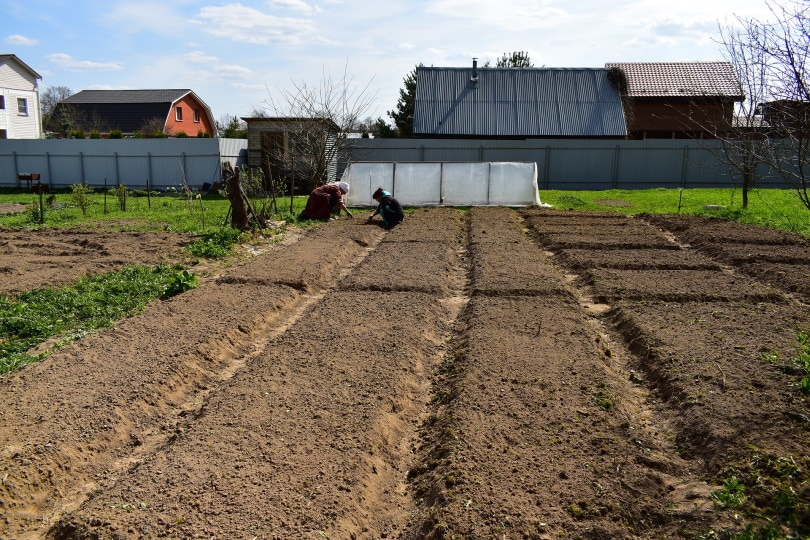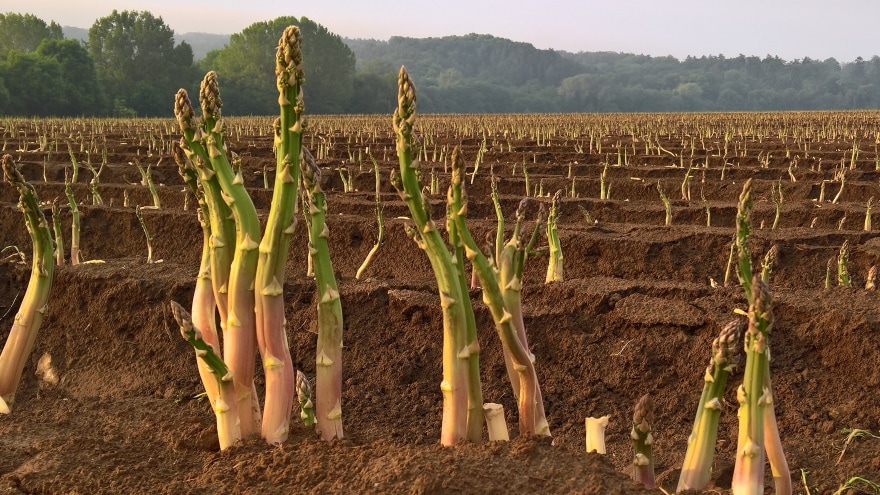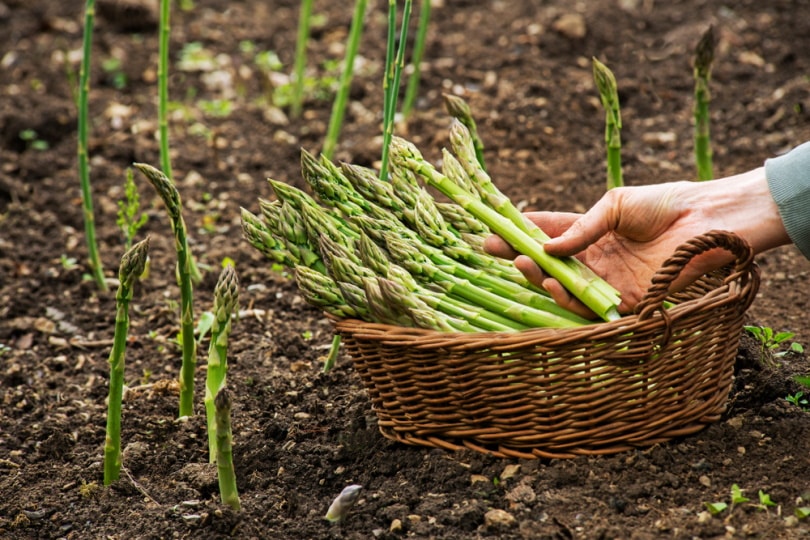How & When to Plant Asparagus: Tips & Tricks
-
Pete Ortiz
- Last updated:

Asparagus is a popular vegetable that can be used in a variety of dishes or as a delicious side dish to the main course. Asparagus is packed full of essential vitamins and nutrients including folate, vitamin K, potassium, vitamin C, and vitamin A.
It is one of the most nutritionally balanced vegetables you can grow and it is perennial, so it will keep coming back year after year. Here we will go over all the ins and outs of how to get your own asparagus started in your home garden and how to best be successful in growing this healthy, delicious vegetable.
Getting Started
Asparagus can grow in varying climates but will thrive the best and grow more robust in areas that have cooler temperatures and experience long winters. This is a perennial vegetable that will keep showing up year after year with the potential to last decades, but you must first get your asparagus established, which will take some time and patience. Once you have your asparagus well-established, it is easy to maintain and care for.

Varieties of Asparagus
Asparagus plants will either be male or female, but most gardeners choose to grow male plants because they produce larger, more numerous spears. Females produce seeds that resemble red berries, which are toxic to humans. When buying asparagus for planting, it’s best to opt for male plants.
There are many different varieties of asparagus that are of differing colors, tastes, textures, and levels of hardiness. There are four basic varieties of asparagus, including green, white, purple, and wild types. Many other varieties fall within these four categories. It’s best to research the different varieties available and choose what works best for your region and personal taste.
Where to Plant Asparagus
After you pick what varieties of asparagus you want to grow, you need to pick a spot that is ideal to keep this perennial plant growing properly year after year. Here are some tips for finding the perfect location to plant your asparagus.
- Avoid areas with shallow soil or soil that is prone to saturation with water during heavy rains. Heavy saturation will ruin their deep root system.
- Pick a site that is fertile, sunny, and well-drained. You need soil that will hold moisture well but not become too saturated.
- Late spring frosts can kill spears that have emerged so finding an area that is not low-lying or areas that are heavily exposed to frost.

When and How to Plant and Harvest Asparagus
Being successful in growing your own vegetables will require knowledge and preparation. Each plant will have its own specific requirements from preparing the soil to harvest. Now we’ll talk further about when to plant asparagus and walk you right through the process until you are ready to harvest.
Planting Asparagus
Asparagus can be planted as crowns, which are plants around one year of age or they can be started from scratch and grown from seeds. Most gardeners choose to plant the crowns since it will speed up the process and lead to quicker production. It also eliminates the extra work that goes into maintaining seeds throughout the first year. Weeds must be managed for the roots to establish, especially during the first two critical years of growth.
Regardless of whether you choose to plant seeds or crowns, you will need to plant in early spring. Below we’ll include a step-by-step for planting seeds and crowns since the beginning steps are different for each.
- Start your seeds indoors during the spring by soaking them for a couple of hours then planting them in individual pots about ½ inch deep in sterile soil.
- Keep the soil temperature between 70- and 85 degrees Fahrenheit for germination.
- Sprouting should take place between 2 and 8 weeks after planting.
- Do not transplant to the garden until after the last spring frost, the seedling should be anywhere from 10 to 14 weeks old.
- The seedlings will need some hardening off time for a successful transition outdoors, so make sure not to skip this step, which can take about 1 to 2 weeks total.
- When you are ready to plant after the hardening-off period, dig deep rows about 3 to 6 inches apart and plant the seedlings 4 to 8 inches deep, spaced 12 to 18 inches apart.

- Soak the crowns in lukewarm water before planting.
- Make sure the bed is weed-free before you begin planting and blend your soil with compost or organic fertilizer.
- Dig a trench in your garden that is about 12 to 18 inches wide and 6 to 8 inches in depth for planting. Trenches should be spaced at least 3 feet apart.
- Create a ridge of soil about 2 inches high along the center of the trench and place the crowns on top with their roots spread evenly.
- Plant the crowns about 12 to 18 inches apart in the trench.
- Cover the crowns with your mix of topsoil and compost and bury approximately 2 inches deep and water appropriately.
- When the spears grow between 2 and 3 inches tall, add an additional 2 inches of soil into the trench but do not bury them completely.
- Keep adding 2-inch layers of soil as the spears continue their growth and repeat until your trench becomes level with the ground. Some choose to fill the trench all at once, which is not the traditional method but can work well but it’s recommended to keep the soil loose if you choose to do this, as the spears need to easily emerge from the soil.
- After you’ve filled the trench completely and it is level with the ground, mound the soil very slightly to prevent water from pooling around the spears. You can also add 4 to 6 inches of mulch to help reduce weed growth and hold in moisture for the soil.

- During your first 2 years of growing asparagus, you need to water 1 to 2 inches per square foot per week if you are not getting a steady amount of rainfall.
- Provide your asparagus with regular amounts of plant food during the growing season. Organic fertilizer is highly recommended.
- This is a time-consuming process, you do not want to harvest your spears during the first two years since the plant needs enough time to fully establish its root system.
- Keep the area thickly mulched and in the second year, side-dress with compost in both the spring and the early fall and cut down dead foliage in the late fall.
- Once you reach year three, the asparagus should be in full production and ready to harvest. When you first begin harvest, it’s best to do so sparingly through the season.
- Keep an eye on your plants and check to see if they are harvest-ready once every one to two days. Once a spear starts to open and produce foliage it will be too tough to eat.
- Harvest when your spears reach 8 to 10 inches in height and about 1/2 and 3/4 inches in thickness. You can continue to harvest for about 6 to 8 weeks but generally, do not harvest after the first of July so the plant can maintain itself for the next season.
- When your spears are ready for harvest, cut the spears with sharp scissors or a knife right at ground level. Once you’ve finished harvesting, top off with some organic fertilizer, and do not cut down the remaining ferns. Only cut back after the foliage has died and turned yellow to brown.

Conclusion
When planting asparagus, there are many types to choose from with varying colors, thicknesses, tastes, and time for harvest. Different types of asparagus will thrive in different zones, so it’s important to check which zone you are located in and the optimal variety for your area. It takes approximately three years to establish a healthy, productive patch but once it has been established, you will have asparagus popping up annually for many years under the right conditions.
Featured Image Credit: Africa Studio, Shutterstock
Contents


